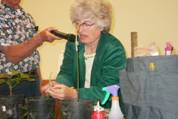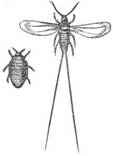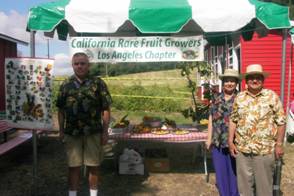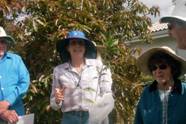LOS ANGELES CHAPTER
Newsletter


MAY MEETING
Date: Saturday May 27, 2006
Time: 10 am
Place: Sepulveda Garden Center
Program: Cancel any other weekend plans and join us for a really “MEMORIAL”
presentation. Tony Kienitz, master vegetablarian , who confesses to have “eaten his
yard” will be our speaker. If you subscribe to the Los Angeles Times you have
probably read some of his articles (latest one on cherimoyas appeared on Thursday, May 4)
in the Home section. He has also been a frequent guest on HGTV; written a very
entertaining and informative book, “The Year I ate My Garden”; published articles in
various magazines such as Sunset, Garden Design and Daily Variety and
been a guest speaker at various universities, garden clubs and public gardens (e.g. Descanso
Gardens). Don’t miss this!
JUNE MEETING
Date: Saturday, June 24, 2006
Time: 10 am
Place: Conejo Valley Botanical Gardens
Directions: Exit the 101 Freeway at Lynn Rd. and go north 0.7 miles to Gainsborough
Road. Turn right and continue for 0.5 miles to the entrance on the right.
Program: Dr. Ed. Hager, will lead us on a tour of the rare fruit orchard. The Rare
Fruit Orchard exhibits 130 trees including 40 varieties from 35 countries in an attempt
to demonstrate to the community the tremendous versatility of our Southern California
growing environment which enables us to grow a huge variety of unusual temperate,
subtropical and tropical edibles. More details will be discussed at the May meeting.
WONDERFUL DAY TO BE OUTDOORS!
The Sepulveda Garden Center at 16633 Magnolia Blvd (our LA Chapter meeting place) will be hosting their annual Country Garden Fair on May 20th and 21st from 9 am to 5pm. Not only will our LA Chapter be providing a plant sale, there will be other garden clubs and plant societies, a bonsai show, arts and crafts for sale, food and much much more. ADMISSION IS FREE! Contact Dick Watts at 805 484-3584 if you would like to help out or have plants to sell. Dick would really appreciate the help and support. You can also enjoy the beautiful rose garden, walk around the plots of many different gardeners, and see the desert area. A great way to spend a Sunday!
 SUGARCANE – Saccharum officinarum – Poaceae
SUGARCANE – Saccharum officinarum – Poaceae


 : The annual Festival of Fruit will be held this year in San Luis Obispo, Cal Poly. The dates are September 3rd through the 9th. Start making your plans now. It promises to be an outstanding event.
: The annual Festival of Fruit will be held this year in San Luis Obispo, Cal Poly. The dates are September 3rd through the 9th. Start making your plans now. It promises to be an outstanding event. 